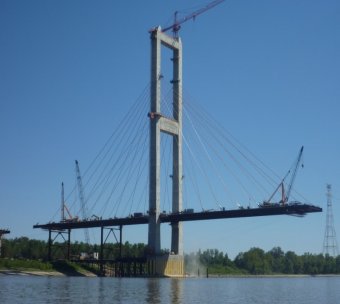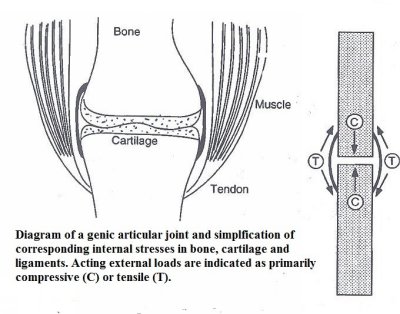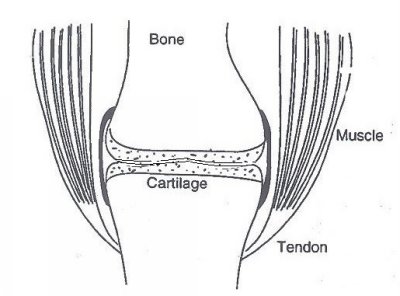Harmonic Tensegrity
Harmonic Tensegrity
Jean Luc Cornille
 Engineering explains that the stability of a structural network is determined by the material properties of the building elements, their arrangement, and the “play” (free movement) in the joints that interlink the different elements. Stability of the critical joints is often achieved augmenting the amount of load -bearing material in the critical regions. However, when weight is a consideration, such as for a bridge, engineers have developed “prestress” structures such as concrete beam with pre-tensioned steel bars placed in regions where tensile loads are likely to occur on the concrete beam.
Engineering explains that the stability of a structural network is determined by the material properties of the building elements, their arrangement, and the “play” (free movement) in the joints that interlink the different elements. Stability of the critical joints is often achieved augmenting the amount of load -bearing material in the critical regions. However, when weight is a consideration, such as for a bridge, engineers have developed “prestress” structures such as concrete beam with pre-tensioned steel bars placed in regions where tensile loads are likely to occur on the concrete beam.
Nature, engineered the horse’s legs and whole body for speed and jumping performance finding way to combine light lower legs with strong propulsive power and capacity to absorb considerable impact forces. Nature created biologic tensegrity placing the joints under tension, providing greater strength for less mass. Tensegrity, elastic energy, force transport and other engineering marvels have created the horse whom efficiency starts to be understood as never before. For instance, the living cells that continually remodel bones are able to sense changes in mechanical stresses and respond by depositing new extracellular matrix where it is needed and removing it from where it is not needed.
A tensegrity structure is characterized by use of continuous tension and local compression. The simple joint illustrated in this diagram is stabilized by continuous balance between tension and compression elements. The (C) on the bone means compression and the (T) on the ligament means tension.
The (C) on the bone means compression and the (T) on the ligament means tension.
On a more elaborated model, Christopher S. Chen and Donald E. Ingber, (Tensegrity and mechanoregulation: from skeleton to cytoskeleton, 1999) illustrate the old thinking where ligaments and tendons stabilize the joint and cartilages assure the rotation of one head of the joint around the other.
The model is no longer accurate. Cartilages are very thin and could not withstand the intensity of the impact forces during regular gaits and never the less the landing of a jump. Fascia, arranged in sleeves, wrap joints and keep bones apart as they flex. Under tension, fascia is strong enough to separate the joints creating a microscopic space protecting the cartilages from being crushed by the impact forces. 
Tension of the facia is created by muscles work. Muscles leverage against the fascia to optimize tension for each movement to stabilize and prevent overloading of the joints.
We are no longer at the level of stretching and relaxation or elongating muscles to increase the range of motion. These theories have been the deal for centuries but tissues do not function as theorized in the book. There is an integrity of the whole body that has been completely missed by the equitation of the correct aids. Muscles never work alone and fascia connect the whole muscular system and augment and assist muscle function. Forces can be transported through the limbs and body without power production by the transporting muscles. “Power transport can take place during isometric contraction without power production by the transporting muscle. Therefore, no muscle fibers are needed to transport power and tendons can also transport power.” (Liduin S. Meerrshoek and Anton J. van den Bogert. Mechanical Analysis of locomotion, 2003)
Recent ultrasound-based measurements indicate that fascial tissues are commonly used for dynamics energy storage (catapult action) during oscillatory movements, such as walking, hopping or running. “During such movements the supporting skeletal muscles contract more isometrically while the loaded fascial elements lengthen and shorten like elastic springs.” (Fukunaga et al. 2002) Applying tensegrity to biology, Stephen Levin, (orthopedic surgeon), describes how every part of an organism, from molecular to the gross anatomy, is integrated by a mechanical system into a complete functional unit.
There is an integrity, complexity and subtlety of the horse physique that exposes the inaptness of the equitation of gestures, but also explains and further the vision of the greatest classical authors. The delicacy, the discretion, the finesse advised by the best were an invitation to an equitation of harmonic tensegrity where nuances in muscle tone replace the crude theories of hands gestures, shifts of the rider weight, kicks of the legs, and other coarse actions. The integrity of the horse physique demands the integrity of the rider’s body. Not one part acting, as taught by the equitation of the “correct aids,” but instead the entire body playing with nuances within and overall integrity. Listening to the superb presentation of Betsy Uhl, DVM, PhD, Dip, ACVP, during our last Science of Motion International Conference Patricia Cameron reflected, “I believe the true classical masters would embrace this information as a much better explanation of what they felt, but had only the language of their day available to them to use to explain.” Patricia Cameron)
There is a very large elastic-stiffness diversity across vertebrate muscles. A main component of muscle elasticity is a filament know as filament titin. Within the muscle, titin functions as serially linked spring that develop tension when stretched. There are multiple titin isoforms that vary in size and stiffness. We have been trained to believe that release and relaxation were the components of elasticity. Elastic-stiffness does not fit our equestrian education for the simple reason that our equestrian education is based on literature instead of science. Our ancestors explained what they felt based on the knowledge available at their time. The knowledge was elementary and most explanations are inaccurate. Riders take the guilt for their failure to educate the horse properly because the label classic is often associate with infallibility. Classical views, like feeling, like intuition are not infallible. Thoughts dress differently as knowledge evolves. The concept of tensegrity is a much better explanation for what our ancestors felt. The book has dissected the horse and the rider bodies into pieces, the hands, the legs, the horse neck, the limbs, but the book does not offer a sound explanation of how to synchronize efficiently all the pieces. The book theorized tissues function that matched conventional thinking. The book fits mindfulness but mindfulness does not match factfullness. Tissues do not function as theorized in the book.
Once in Finland, last year at the initiative of Gunilla Wahlberg, and more recently during our 2018 Science of Motion International Conference, Dr. Betsy Uhl and I have presented together the most advanced understanding of tensegrity. The latest talk during the conference was upgraded from the previous talk in Finland, to more advanced knowledge. Betsy explains the scientific aspect of tensegrity and I explains the practical application. Each time, the talk has been very well received. Riders are perfectly capable to understand advanced concept when they don’t try to downgrade new knowledge to traditional beliefs. The practical application does help enormously as it translates into everyday words and horse reactions, the meaning of scientific findings. We plan to do it again in the contest of our Motion Microscope training and therapy program. Tensegrity is the explanation that the bests of the bests have hinted over centuries. Harmonic tensegrity is the new generation of equine athletic training. Tensegrity is how lightness became the horse been instead of just a lightness on the bit. Tensegrity and the practical application of harmonic tensegrity, cannot be explained in one paragraph. It is not a new insight that can be integrated to old beliefs. It is a new generation of riding, training as well as therapy that we plan to explain but also to protect from the culture of ignorance that is downgrading the equestrian worlds.
Jean Luc Cornille


 twitter
twitter facebook
facebook google
google pinterest
pinterest yahoo
yahoo linkedin
linkedin